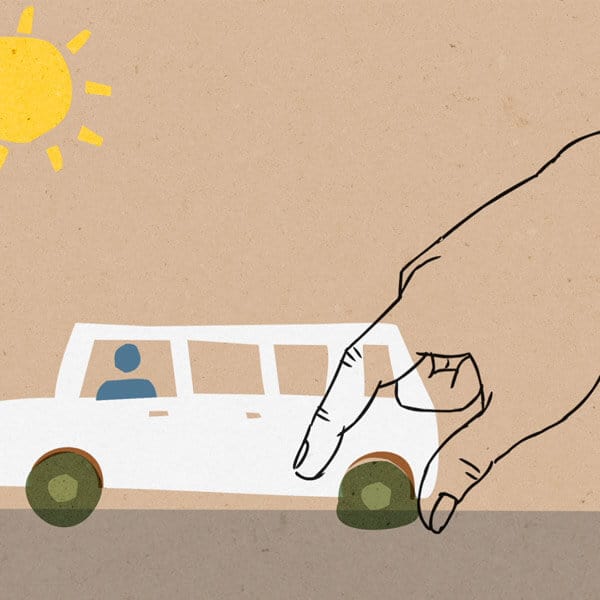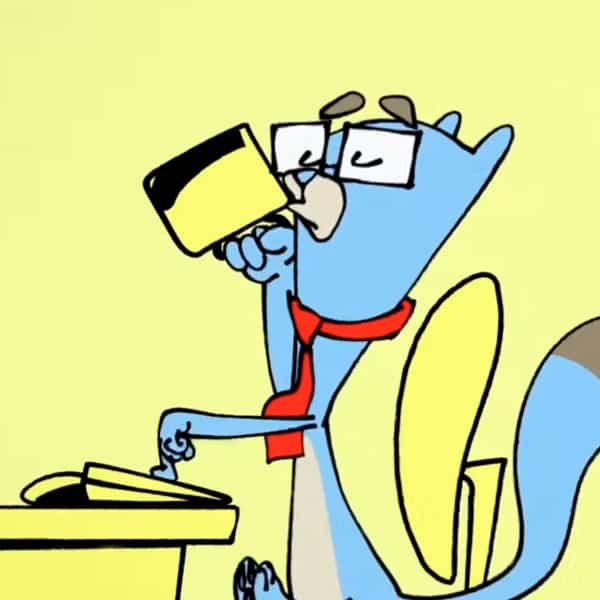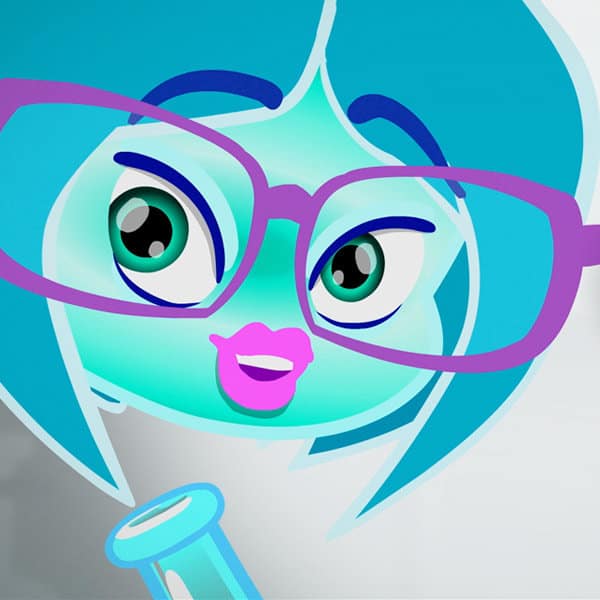…and How You Get a Quality Movie that’s Affordable!
Animation is a captivating art form that brings stories to life with pure creative freedom. But whether we’re talking about a feature film, an explainer movie or a TV commercial, there is always a budget. This will determine how the movie looks. So how can a limited budget not compromise the quality of a movie?
Quality has many aspects, of course. A movie’s greatest quality is how well it speaks to an audience. In essence, this can be achieved at all production levels. At Spin Animation, our goal is to always deliver the best bang for the buck. And understanding the inner workings of animation and film making itself, we can do just that!
Let’s take a look at 11 different factors that determine the workload and price of an animation production. We will also elaborate on key areas that offer great opportunities for adding value with not much effort. – Let’s go!
1. Duration – How long does it run?
Every second of animated film takes considerable work, and more seconds mean more work. However, it’s not a linear curve, with shorter formats having a higher per-second price than longer ones. This is because some of the work, such as designing and creating assets, may not change significantly with a longer runtime.
2. Storyboard – What’s on-screen?
Taking explainer movies as an example, there is a particularly big liberty in approaching the storytelling. We can mix and match a number of different elements: Narratives, infographics and even abstract visuals. But whether we see a pie chart or a crowd of people running in circles with their hair on fire, that makes for a very different workload.
On top of that, we can stage an action in many different ways, resulting in different amounts of work and also giving it different kinds of meaning.
Knowing how to intrigue.
Many low-budget explainer movies resort to bland, uninteresting storytelling, from beginning to end. But it doesn’t have like that. With our long-standing expertise in the field of storyboarding, we know how to make movies involving and keep the cost down at the same time. At Spin Animation, it’s about evoking curiosity, raising expectations and creating surprise. A movie needs to play with emotions.
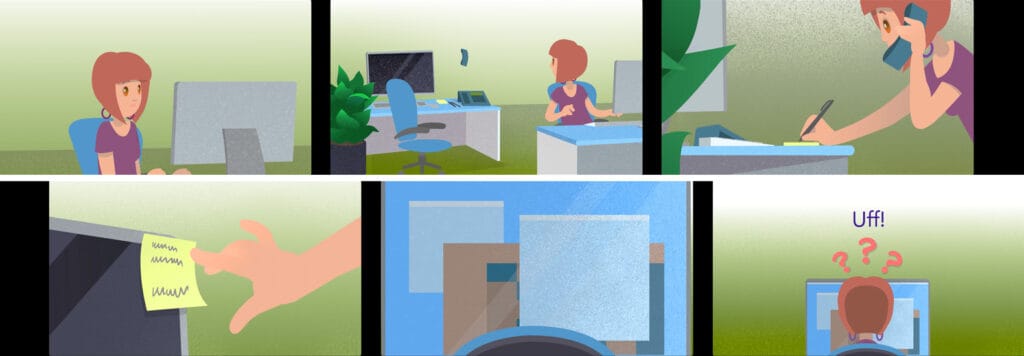
Storyboard sequence: Elegant staging of a coworker getting distracted by taking a message. The different shots create interest and require a minimum of animation.
Furthermore, we don’t want to spread our effort evenly across the duration of the movie. Instead, we focus on key scenes and invest the bulk of work there – “money shots”, so to speak. – Which will create more production value overall.
3. Technique – How is it made?
We’ll go into more detail about various animation techniques in the future since they are very important for understanding the process. Here’s a short one-minute outline.
So which kind of animation is pricey, which one’s cheap?
In a nutshell, expensive animation techniques are:
• 2D Traditional (Full) Animation
• 3D Animation
• Stop Motion Animation
Affordable animation techniques are:
• 2D (Limited) Animation
• Scripted Animation
• Virtual Animation
What’s the best animation technique for your movie?
You don’t want your movie to look cheap, but you probably also don’t want to spend too much. You’re in luck because we’ve developed ways to create Limited Animation that will retain the timeless charm and vitality of Full Animation – while saving time and money by reusing and layering drawings. I’ll go more into this technical stuff in detail in a future article.
From a more general point of view, there are always multiple ways of doing one thing. We are trained in a host of different animation tools and practices and will resort to the technique that will make most sense for any given element of a scene.
4. Design – How does it look?
There is a dominating balance between Animation and Design. The same budget can either buy you a detailed design with little animation, or a simple design with lots of animation. – Or some of both, which is quite common.
5. Animation – How does it move?
This is the other side of the balance; now we’re talking about the quality of the animation. And how many animated characters and elements are there? They all add up.
Animation with a decided purpose.
We see so many explainer movies where the animation of elements is misguided: Everything is moving aimlessly and as such is actually distracting from the main message. Spin Animation has mastered the art of bringing motion to a point. We always serve the purpose of driving your message.
6. Pacing – How much time until the next thing happens?
In this case we mean the speed of the movie. Let’s take an example: If a character closes a book, puts it down and gets up from her chair, that’s at least 3 Beats in animation terms. You see where this is going: Faster action means more Beats in the same amount of time, and that means a higher budget.
7. Voice Over – Say what…?
Recording a voice over accrues a fee for the speaker, but also for the sound engineer and the studio time. Furthermore, there are limitations to the use of the recording, and a buyout may be necessary for certain applications. More on that under point 10.
8. Music – Using the power of sound.
In this department, we are dealing with three options: No music, stock music or a custom composition. Hiring a professional composer that will meticulously create a score for the image is guaranteeing to give your movie the most emotional impact. On the other hand, stock music tends to just play randomly in the background. – Which is often times a missed chance.
Sound: Solved.
When we decide to use stock music, we always take our time to make it fit your movie perfectly. At Spin Animation, we edit, filter, fade, add new elements or even splice several tunes together to form a new composition.
9. Versions – Making your movie versatile.
Depending on your audience and distribution channels, you might need different language versions and/or format versions. The cost for a different format is generally low but can vary depending on the content. The price of a language version will depend on the amount of on-screen text and whether or not a new speaker is needed.
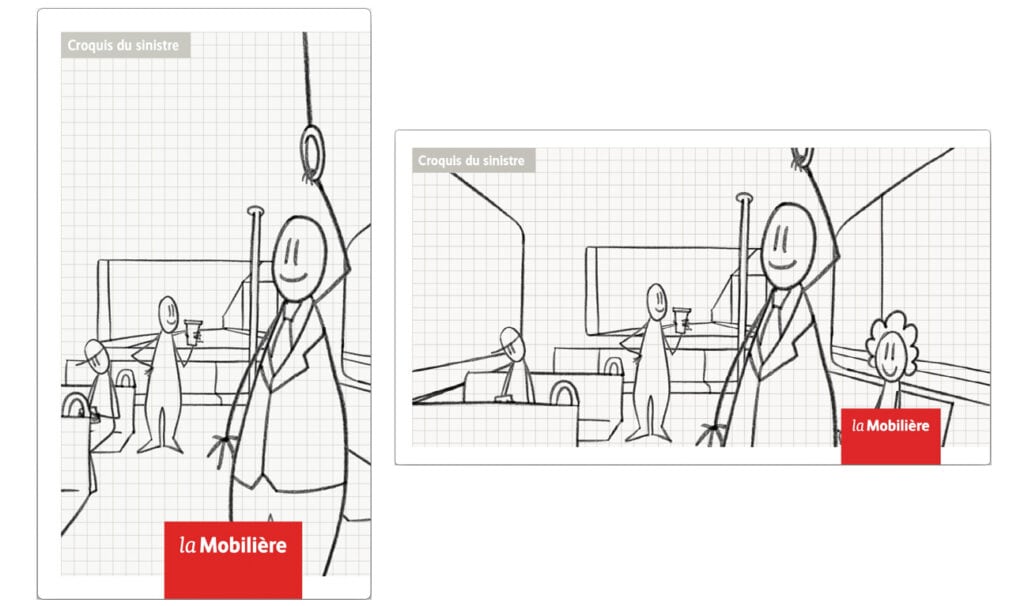
Different layout solutions of the animation for the 9:16 and 16:9 format versions.
10. Use – Where is it shown?
Music, voice recordings and imagery all come with different price tags depending on whether your movie is shown on unpaid channels (such as social media) or on paid ad space (such as a TV commercial or YouTube ad).
11. Planning – First things first.
Keeping the trajectory of the production straight is key in order to stay on budget. It’s not often, but it happens that in the middle of the production process, one gets thrown back to the scriptwriting stage due to unforeseen circumstances, and as a result, work is lost.
Making the working process work.
From the start, our main focus is to fully comprehend your message as well as your target audience. That means asking a lot of questions and making sure we’re on the same page.
Next, we stake out each stage of the production to fit your deadline and schedule, making the development of your project as straightforward as possible.
By carefully planning, prioritising, and making smart decisions throughout the production process, we fit your budget beautifully. We create an engaging and captivating animation, guaranteed to effectively communicate your message to your audience. – Because they actually enjoy watching your movie.
